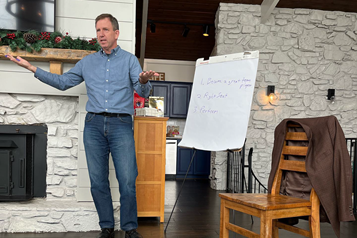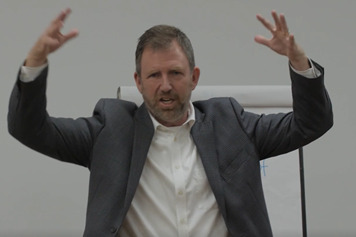While it’s always been hard to build trust on teams, it has become even more difficult. Constantly changing conditions, separated team members, constant pressure, overwhelmed leaders, fatigued employees are just a few of the reasons. Many teams are struggling with broken trust. When people do not trust their team members, problems with turnover, morale, stress, burnout, and productivity accelerate. Negative and toxic behaviors seep into the team. Life on the team is miserable. You can hear it in people’s voices. No one wants to work on a team where trust is broken. Everyone wants to be on a team where they flourish. When trust is broken on a leadership team, it gets even worse: not only do people on the leadership team suffer, but everyone in that organization feels the effects.
It’s time to re-build trust. In this post, I’ll share the first of three steps.
What is trust?
First, let’s define trust. Patrick Lencioni says that “trust is all about vulnerability.” Brené Brown says that “trust is a product of vulnerability.” Vulnerability-based trust is what we are talking about, not trust that people are competent in their job. Are people on your team willing to be vulnerable? Are they willing to admit mistakes, say they are sorry, offer ideas, and admit they need help or don’t have the answer? Are you willing to be vulnerable as a leader? Where is the energy on your team? Is the energy in finding solutions and engaging in forward change? Or is the energy in protecting ourselves and processing how other people will react or respond? It needs to be the former.
Let’s get to the first of those three steps.
Step 1: Expose the Mess
When I lived and worked in Seattle in the late 90’s, plans were put in place to build a brand new football stadium – what is now Lumen Field. However, the new stadium could not be built…until the old stadium – the Kingdome – was removed. I was present for the demolition of the Kingdome. Our family, as well as many others, stopped on the side of the freeway, and counted down until the explosives ripped through the old stadium and it collapsed in a heap. It was loud, surprising, and messy. Yet, it had to be done. Only once the old mess was addressed could the new stadium be built.
It’s the same way with re-building trust. You can start to work on building trust on your team again, but at some point you have to acknowledge that there has been a lack of trust, people have been wounded, something has happened, and it may take a while to rebuild that trust. You have to expose the mess of distrust.
How do you expose it?
One, sometimes exposing distrust occurs naturally. When we start to work on rebuilding trust (see ideas in the next post), the past will naturally come up as part of the conversation. Let it. Don’t squash that conversation. You have to face it in all its ugliness. My natural tendency is to be positive and focus on moving forward. I don’t like being negative, it makes me uncomfortable. There’s a time and place for positivity and moving forward, but there’s also a time and place to get distrust out in the open. You can’t manage a secret. You can’t move forward if people on the team are harboring hurt and resentment.
Two, sometimes exposing distrust needs a direct approach. If there is an overt problem, such as with a particular individual or between two individuals, you may need to address that first. Meet with them 1-on-1. Meet with them together. Tell them that we are going to try and get past it. Involve them in generating solutions. Forgiveness and apology may be appropriate here but it can’t be forced or coerced.
Three, sometimes an intentional activity is warranted. For example, you could create three lists: our team today, what our team could be, and what needs to change for our team to accomplish what it could be. Ask the team to place post-it notes that describe what the team is today. What words would you use to describe it? I suggest focusing on behaviors – like arguing or not speaking up or not engaging – instead of assuming motives or intent – like selfish or concerned with ourselves. Incidentally, this list is also the team’s future if nothing changes. Then ask the team to describe what the team could be if changes were made. Finally, what specifically do each of us need to do in order to achieve that new state. Don’t get hung up on whether your team is in person, virtual, or hybrid. Use your Zoom annotation tools – it’s no different. You can still have the conversation. You just need to be intentional and persistent.
The overall goal is not to solve distrust. The overall goal to gain commitment and make progress on moving forward. The problem is out. We’re not pretending anymore. We’re not necessarily going to solve it now but we can at least commit to moving forward and working towards a solution with small steps and good intentions.
Let’s commit as leaders to start rebuild trust so that everyone can flourish on our teams.
Next: Steps 2 and 3…
STRATEGIC TEAM OFF-SITES
Solve your teamwork challenges; build a high-trust environment; launch your team forward.
In-person, virtual, or hybrid.




